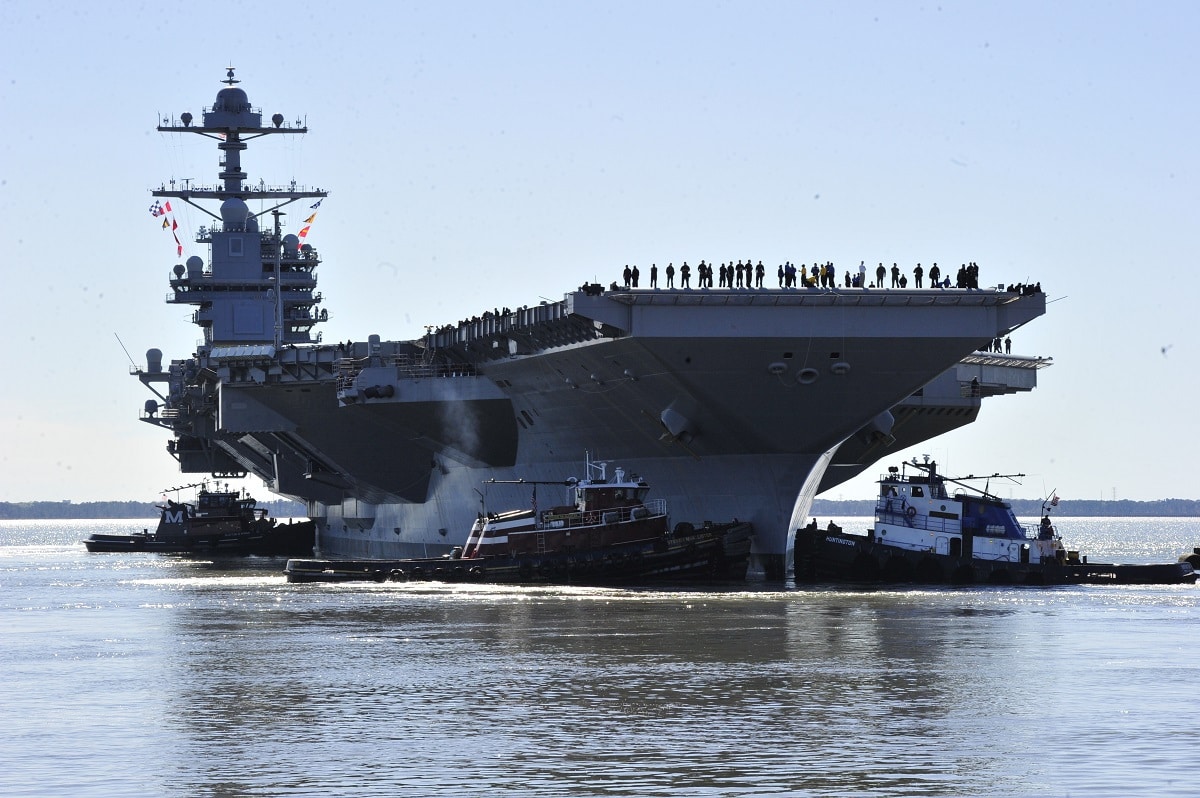Nature calls everywhere – even on board an aircraft carrier. There’s even a slang phrase for it in the Navy, where a response to nature is called a “head call.” Indeed, a bathroom on a ship is called the “head.”
So, what if I told you it costs $400,000 to fix a toilet clogged in the head? Sailors have to unclog the stoppages with a highly expensive process called an acid flush of the sewage system. This problem was first documented in 2020 on the Nimitz-class USS George H.W. Bush and the newer USS Gerald R. Ford, although the Navy says it is no longer an issue. Fixing these types of overflowing toilets makes a routine action very expensive and complicated – a situation that has alarmed government watchdogs.
What’s the Deal With Military Toilets?
In 1986, a spending scandal at the Pentagon revolved around the military paying $640 for each toilet seat in airplanes. This expenditure screamed government waste, and it became symbolic of military spending gone awry. The problems with toilets on the Navy’s most expensive carriers came later, but the cost was much greater.
In 2020, the Government Accountability Office stepped in to investigate this smelly state of affairs. It may still be happening in 2022 – 36 years after the government was ripped off on commode seats. Still worse, the Office found 149 other maintenance problems on carriers besides the sewage issues. In total, these problems cost the Navy $130 billion. The eye-watering expense of the acid flushes, though, stood out to budget analysts.
The GAO found that toilets for over 4,000 sailors require a special system akin to what is used on commercial airliners, but occurring on a greater scale, considering all the people going to the bathroom on carriers. The GAO said the cost of each acid flush was approaching half a million dollars. Personnel in the oversight agency in 2020 were not even sure how many acid flushes would be required in the future. The GAO called the process “an unplanned maintenance action for the entire service life of the ship.”
This May Be Happening On Other Ships
The GAO did not know how to compute the total cost for the acid flushes. “The navy has yet to determine how often and for how many ships this action will need to be repeated, making the full cost impact difficult to quantify,” it stated
A carrier is a floating city, and there are about 432 toilets onboard. The bathrooms on the Gerald R. Ford are “gender neutral” and do not have a urinal. That is a high number of commodes to maintain.
The Navy said the problem has been fixed and that 94% of the toilets in the carriers named in the report are working properly. The service branch believes the sailors were flushing unauthorized material, and that caused the clogging. Since 2020, no other government oversight mechanism has featured the toilet problems on carriers, so let’s give the Navy the benefit of the doubt that the toilets are now operating correctly.
Nevertheless, this shows how costly it is to maintain a carrier. Such regular maintenance expenses run alongside the costs of refueling nuclear reactors and carrying out major overhauls. Two carriers are undergoing this process now in the Newport News yard. Let’s hope workers there are not poking around the sewage system, costing man hours that could be spent on more pressing jobs.
Bonus: Ford-Class Aircraft Carrier Photo Essay
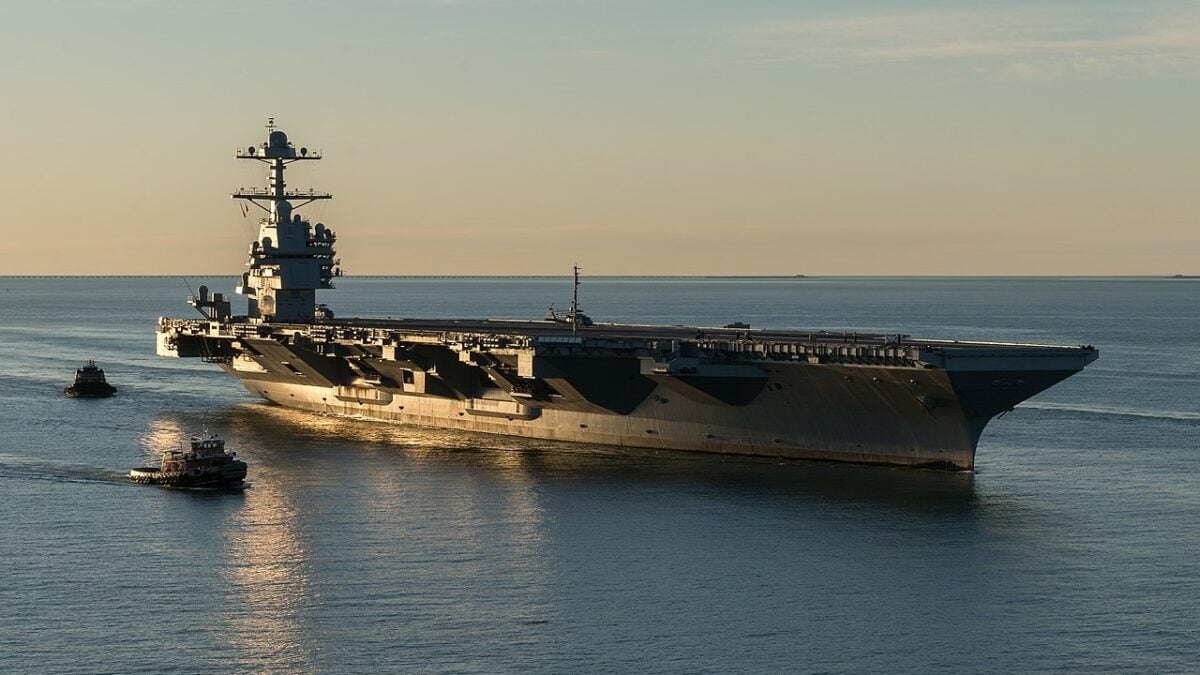
From 2017 – The aircraft carrier Pre-Commissioning Unit (PCU) Gerald R. Ford (CVN 78) pulls into Naval Station Norfolk for the first time. The first-of-class ship – the first new U.S. aircraft carrier design in 40 years – spent several days conducting builder’s sea trails, a comprehensive test of many of the ship’s key systems and technologies. (U.S. Navy photo by Matt Hildreth courtesy of Huntington Ingalls Industries/Released)

Ford-Class. Ford-Class Aircraft Carrier USS Ford.
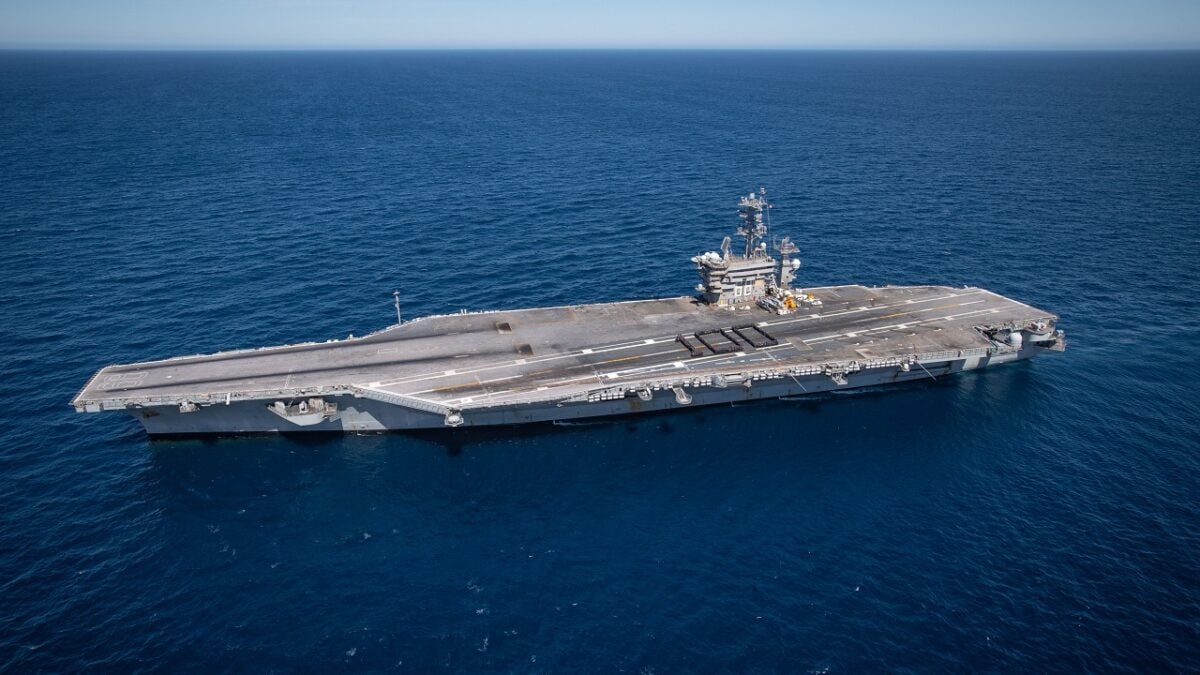
(Mar. 12, 2022) Sailors aboard USS Nimitz (CVN 68) assemble on the flight deck and form a human ‘100’ to commemorate the centennial of the aircraft carrier. On March 20, 1922 the former USS Jupiter (Collier #3) recommissioned as the USS Langley (CV 1), the U. S. Navy’s first aircraft carrier. One hundred years later, Nimitz and Ford-class aircraft carriers are the cornerstone of the Navy’s ability to maintain sea control and project power ashore. Nimitz is the first in its class and the oldest commissioned aircraft carrier afloat., carrying with it a legacy of innovation, evolution and dominance. Nimitz is underway in the 3rd Fleet Area of Operations. (U.S. Navy photo by Mass Communication Specialist 3rd Class Elliot Schaudt)
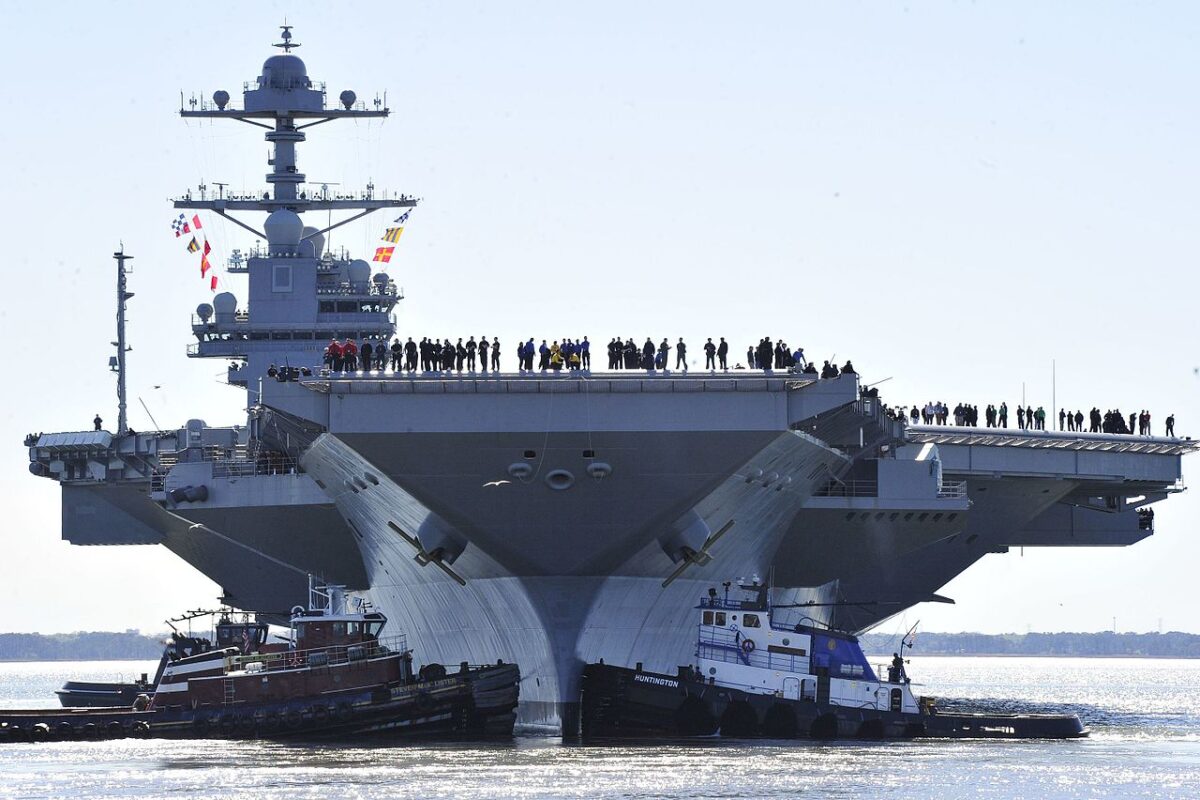
NEWPORT NEWS, Va. (April 8, 2017) – Pre-Commissioning Unit Gerald R. Ford (CVN 78) Sailors man the rails as the ship departs Huntington Ingalls Industries Newport News Shipbuilding for builder’s sea trials off the coast. The first- of-class ship—the first new U.S. aircraft carrier design in 40 years—will spend several days conducting builder’s sea trials, a comprehensive test of many of the ship’s key systems and technologies. (U.S. Navy photo by Chief Mass Communication Specialist Christopher Delano).
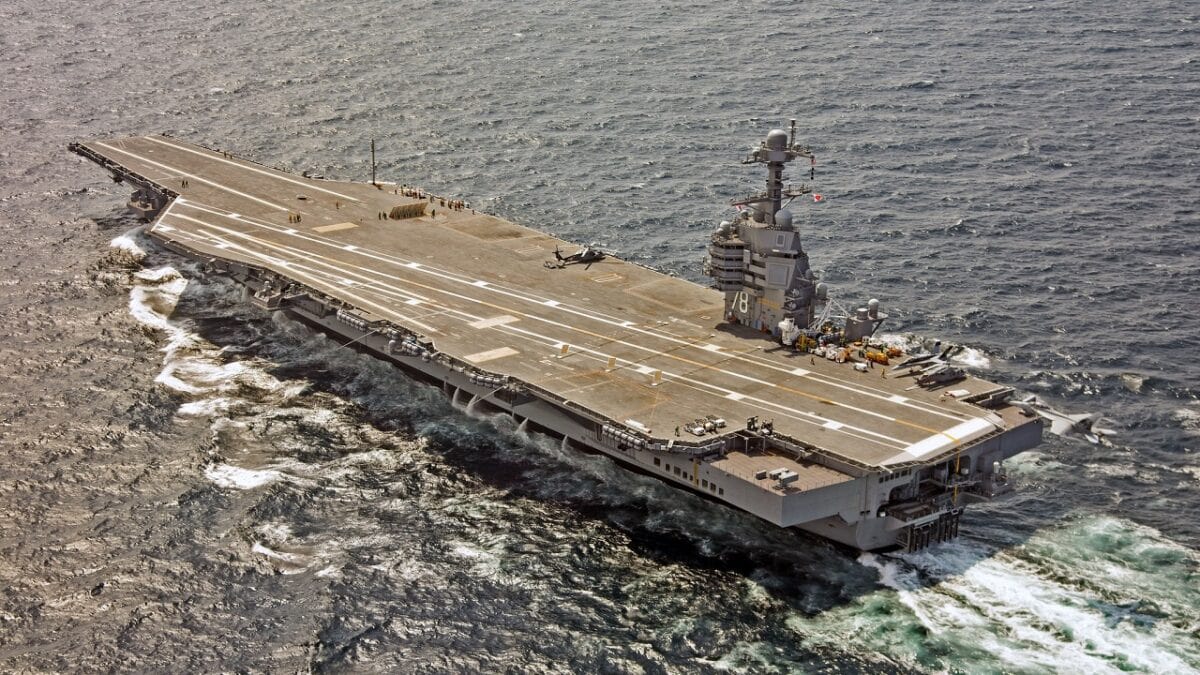
Ford-Class Aircraft Carrier Artist Rendering. Image Credit: Creative Commons.

Ford-class Aircraft Carrier. Image Credit: US Navy.

200604-N-QI093-1142
ATLANTIC OCEAN (June 4, 2020) The Ford-class aircraft carrier USS Gerald R. Ford (CVN 78) and the Nimitz-class aircraft carrier USS Harry S. Truman (CVN 75) transit the Atlantic Ocean, June 4, 2020, marking the first time a Ford-class and a Nimitz-class aircraft carrier have operated together underway. Gerald R. Ford is underway conducting integrated air wing operations and the Harry S. Truman Carrier Strike Group remains at sea in the Atlantic Ocean as a certified carrier strike group force ready for tasking in order to protect the crew from the risks posed by COVID-19, following their successful deployment to the U.S. 5th and 6th Fleet areas of operation. (U.S. Navy photo by Mass Communication Specialist 2nd Class Ruben Reed/Released
Now serving as 1945’s Defense and National Security Editor, Brent M. Eastwood, PhD, is the author of Humans, Machines, and Data: Future Trends in Warfare. He is an Emerging Threats expert and former U.S. Army Infantry officer. You can follow him on Twitter @BMEastwood.

